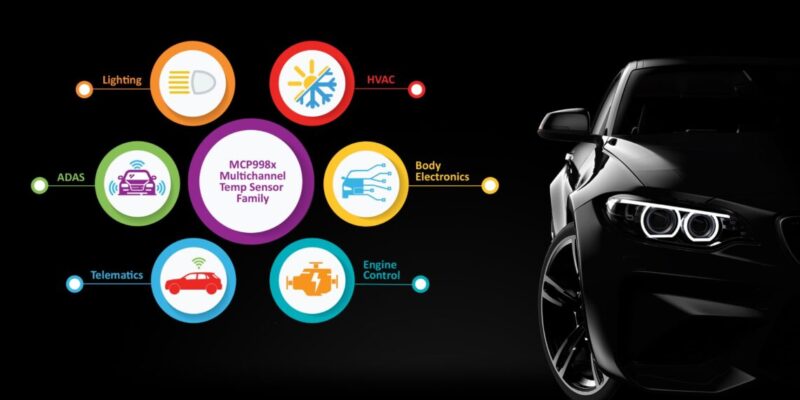Thermal management is an important aspect of automotive design, but there is a distinct lack of options for multi-channel remote temperature sensors compared to many other components. To fill this gap, Microchip Technology Inc. has introduced 10 automotive-grade remote temperature sensors in the MCP998x family, one of the industry’s largest portfolios of automotive-grade, multi-channel temperature sensors that deliver 1°C accuracy over a wide operating temperature range. Five sensors in the device family have shutdown temperature setpoints that cannot be overridden or maliciously disabled by software.
With up to five monitoring channels and multiple alarm and shutdown options, the family supports systems that monitor more than one thermal element. The remote sensors also have integrated resistance error correction and beta compensation for improved accuracy without additional configuration. Using a single integrated temperature sensor to monitor temperatures at multiple locations reduces board complexity, shrinks size, and simplifies design, resulting in a lower bill of materials (BOM).
This new family of remote temperature sensors expands customer choice in a product category that previously offered very limited options,” said Fanie Duvenhage, vice president of Mixed Signal and Linear Products at Microchip. with high accuracy in ultra-high temperature applications and five of the devices feature shutdown safety, providing customers with a broad selection of automotive multi-channel temperature sensors.”
The MCP998x family of devices is even more accurate, with 2.5°C accuracy at up to 125°C, allowing use at the upper end of the traditional temperature range, where many competitors fall short. This high-temperature resistance makes them ideal for automotive applications, where the operating temperature of electronic components is a major consideration. The MCP998x sensors are designed to support automotive functions such as HID lamps, advanced driver assistance systems (ADAS), car servers, video processing, infotainment systems, engine control, telematics, and body electronics such as seat controls, lighting systems, mirror controls, and power windows. power windows) and other automotive functions.













Leave a comment